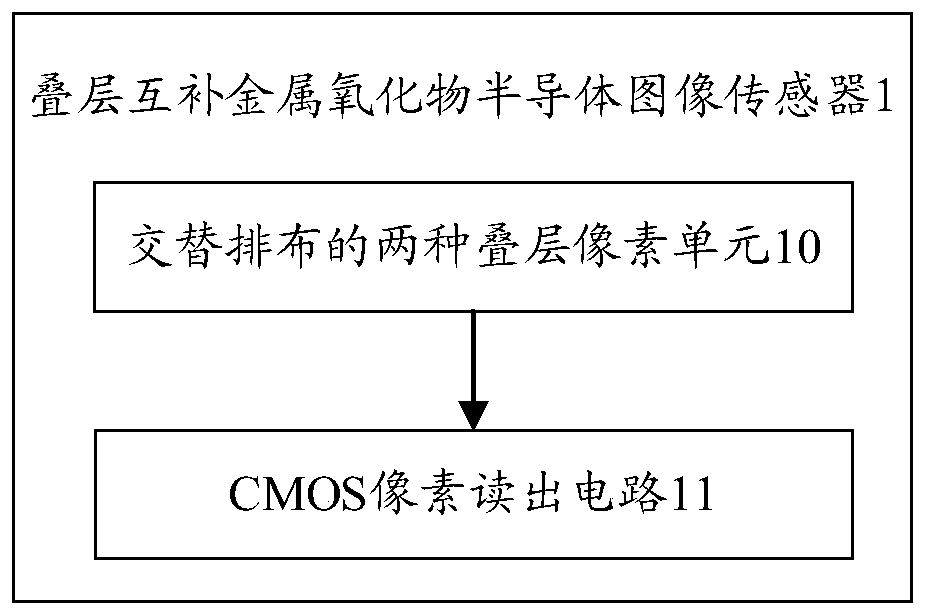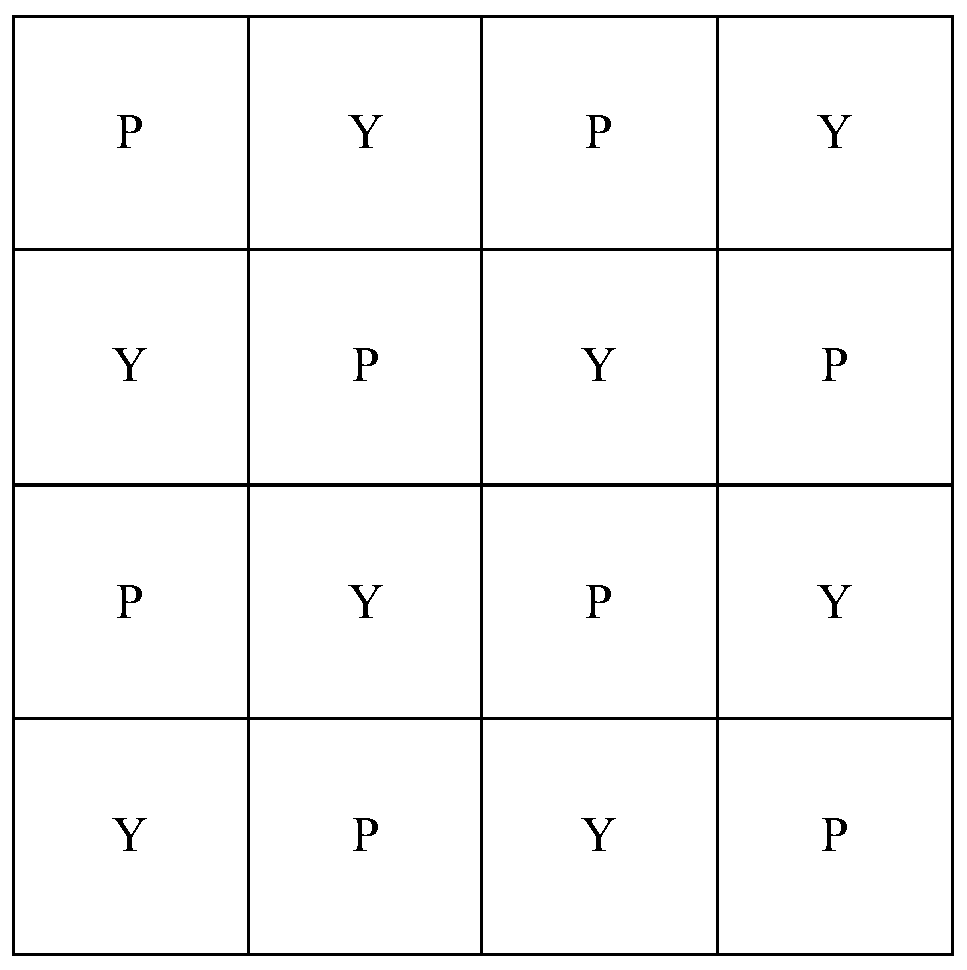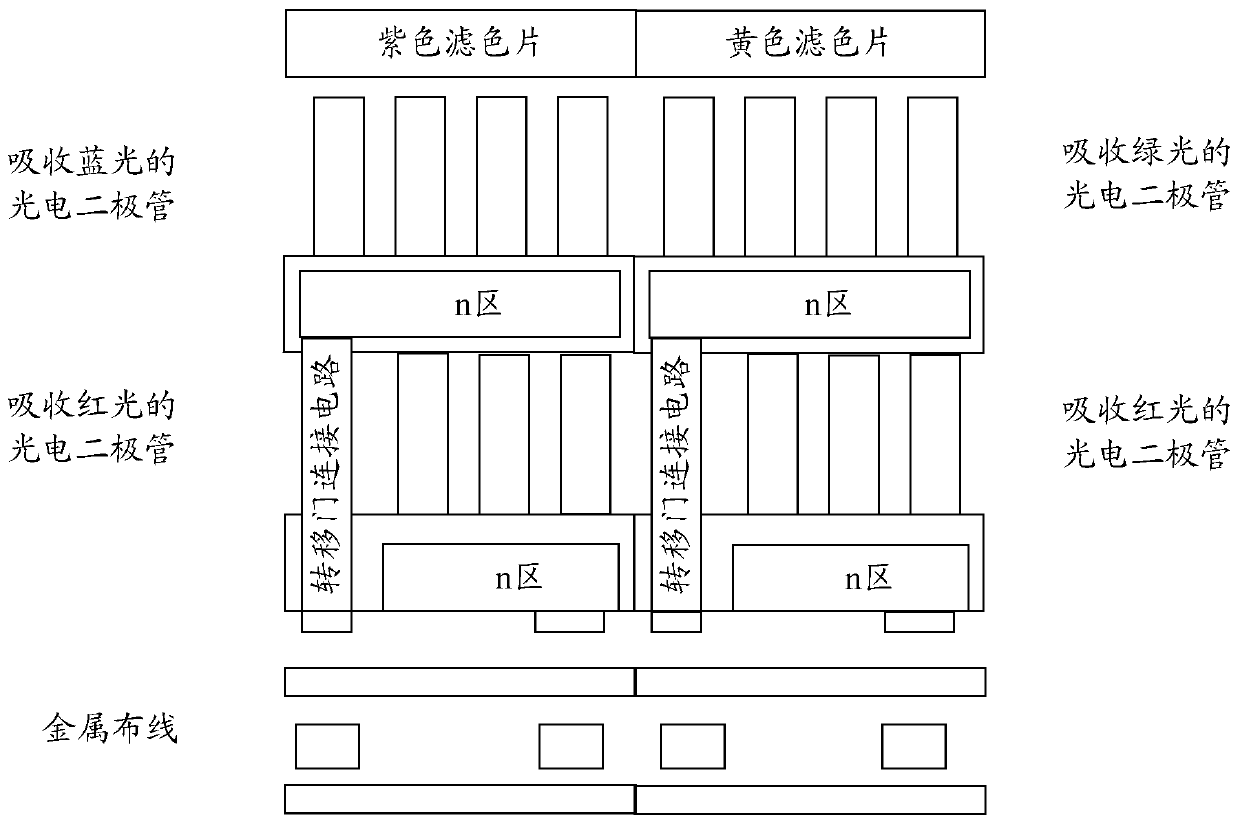Laminated complementary metal oxide semiconductor image sensor and image processing method
An oxide semiconductor and image sensor technology, applied in the field of image processing, can solve the problems of large thickness, high power consumption and large pixel size of complementary metal oxide semiconductor image sensors
- Summary
- Abstract
- Description
- Claims
- Application Information
AI Technical Summary
Problems solved by technology
Method used
Image
Examples
Embodiment 1
[0049] An embodiment of the present application provides a stacked complementary metal oxide semiconductor image sensor 1, such as figure 1 As shown, the stacked complementary metal oxide semiconductor image sensor 1 includes:
[0050] Two kinds of stacked pixel units 10 arranged alternately, the two kinds of stacked pixel units 10 include photodiode PD columns 100 of three sizes, wherein each of the two kinds of stacked pixel units 10 is stacked The pixel units are respectively arranged with two layers of PD columns 100. The two layers of photodiode PD columns 100 include PD columns of two sizes, and the size of each layer of PD columns in the two layers of PD columns 100 is the same. The layer pixel unit 10 uses the PD columns of the three sizes to absorb the RGB three-color lights respectively, and converts the optical signals corresponding to the RGB three-color lights into electrical signals corresponding to the RGB three-color lights;
[0051] A CMOS pixel readout circu...
Embodiment 2
[0103] An embodiment of the present application provides an image processing method, which is applied to a stacked complementary metal oxide semiconductor image sensor. The stacked complementary metal oxide semiconductor image sensor includes two types of stacked pixel units and CMOS pixel readout circuits arranged alternately. The two types of stacked pixel units include three sizes of PD columns, wherein each of the two types of stacked pixel units includes PD columns of two sizes, such as Image 6 As shown, the method may include:
[0104] S101. Utilize two sizes of PD columns of each stacked pixel unit to absorb two kinds of RGB monochromatic lights sequentially, so as to use three sizes of PD columns to respectively absorb RGB three-color lights, and convert the optical signals corresponding to the RGB three-color lights into an electrical signal.
[0105] An image processing method provided in an embodiment of the present application is applicable to a scenario where im...
Embodiment 3
[0124] An embodiment of the present application provides a storage medium on which a computer program is stored. The computer-readable storage medium stores one or more programs, and the one or more programs can be executed by one or more processors. In the CMOS image sensor 1, the computer program realizes the image processing method as described in the second embodiment.
[0125] Specifically, when the program instructions corresponding to an image processing method in this embodiment are read or executed by an electronic device, the following steps are included:
[0126] The two sizes of PD columns of each stacked pixel unit are used to absorb two kinds of RGB monochromatic lights in sequence, so that the three sizes of PD columns are used to absorb RGB three-color lights respectively, and the RGB three-color lights correspond to The optical signal is converted into an electrical signal;
[0127] The electrical signal is amplified by the CMOS pixel readout circuit, and the...
PUM
 Login to View More
Login to View More Abstract
Description
Claims
Application Information
 Login to View More
Login to View More - R&D
- Intellectual Property
- Life Sciences
- Materials
- Tech Scout
- Unparalleled Data Quality
- Higher Quality Content
- 60% Fewer Hallucinations
Browse by: Latest US Patents, China's latest patents, Technical Efficacy Thesaurus, Application Domain, Technology Topic, Popular Technical Reports.
© 2025 PatSnap. All rights reserved.Legal|Privacy policy|Modern Slavery Act Transparency Statement|Sitemap|About US| Contact US: help@patsnap.com



